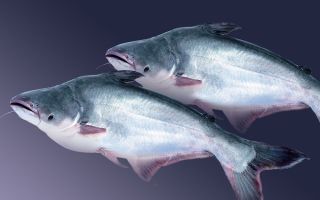Content
- 1 Pangasius: what is this fish
- 2 How to distinguish pangasius from sole
- 3 Pangasius composition
- 4 Calorie content of pangasius
- 5 How is pangasius useful?
- 6 Is pangasius useful for pregnant and lactating women
- 7 Is it possible to give pangasius to children
- 8 How to cook pangasius deliciously
- 9 Harm of pangasius and contraindications for use
- 10 How to choose the right pangasius
- 11 How to store pangasius
- 12 Conclusion
- 13 Fish reviews
Pangasius is an inexpensive fish primarily grown in Southeast Asia. Currently, the benefits and harms of pangasius cause active controversy, since due to certain conditions of its breeding, fish, despite its useful properties, can potentially be dangerous when consumed.
Pangasius: what is this fish
Pangasius is a fish from the Catfish order. Reaches sizes up to 1.3 m and weighs about 40 kg. Mostly young individuals weighing no more than 2 kg go on sale. A feature of the fish is the characteristic six-ray dorsal fin. The Mekong River, where pangasius is found, flows through three countries - Vietnam, Laos and Cambodia. For sale, it is grown artificially, mainly in Vietnam.

How to distinguish pangasius from sole
Sole and pangasius are completely different fish, even belonging to different orders. To distinguish them is outwardly elementary: the sole, being a flatfish, has a characteristic flat body structure. But since most often the buyer is already dealing with processed fish meat in the form of fillets, the differences may not be noticeable at first glance.
Sole fillet is exceptionally white and almost transparent. The color of the pangasius fillet can vary from white-pink to grayish, while it always contains pink patches that are never found in the sole.
In addition, the sole fillet is always thin, because this fish is flat. There is no fishy smell in sole fillets. Also, there are no fatty layers in the sole fillet.
Pangasius composition
The vitamin composition of pangasius (in terms of 100 g of mass) is as follows:
- vitamin PP - 2 mg;
- vitamin C - 1.2 mg;
- vitamin E - 1 mg;
- vitamin B1 - 0.2 mg;
- vitamins B2 and B6 - 0.1 mg each.
Fish contains 70 mg of easily assimilable cholesterol.
Microelements that make up fish:
- potassium - 240 mg;
- calcium - 50 mg;
- phosphorus - 210 mg;
- magnesium - 20 mg;
- iron - 1 mg;
- chromium - 55 mcg;
- iodine - 50 mcg;
- fluorine - 25 mcg.
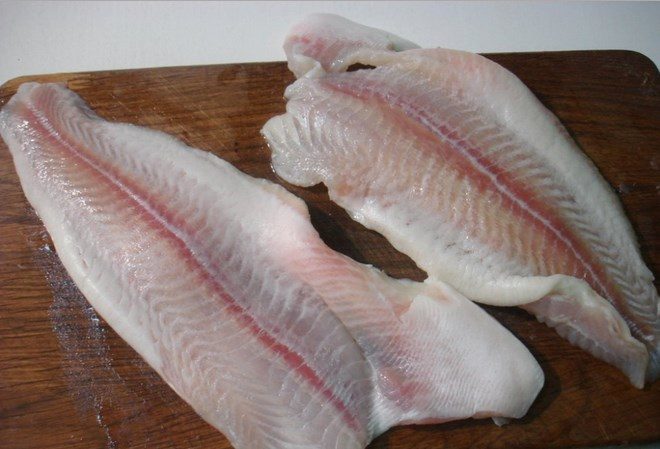
In terms of the content of many trace elements, pangasius is not inferior to most marine fish.
Calorie content of pangasius
Fish has the following nutritional value:
- proteins - 17.2%;
- fats - 5.1%.
There are no carbohydrates in meat. Approximately a quarter of fats are useful Omega-3 unsaturated fatty acids in an amount of up to 1.5% of the total mass. Water makes up 77% of the total amount of substances in fish.
The calorie content of pangasius per 100 grams, depending on its preparation method, is presented in the table.
|
Cooking method |
Calorie content, kcal / 100 g |
|
Without processing |
89 |
|
Boiled or steamed |
89 |
|
Baked |
149 |
|
Fried |
202 |
How is pangasius useful?
The benefits of pangasius fillet, due to the elements included in its composition, are as follows:
- improvement of brain activity and memory (thanks to phosphorus and fats);
- normalization of the skin condition (vitamins and fats);
- improving the structure of hair and nails, increasing their strength (amino acids and calcium);
- strengthening bones, joints and teeth (calcium, phosphorus);
- restoration of the functions of the musculoskeletal system (polyunsaturated fats);
- prevention of early development of joint diseases, in particular, osteoporosis;
- prevention of early aging (antioxidants and polyunsaturated fats).
There is an opinion among nutritionists that regular use of fillets improves sleep and increases stress resistance.
Is pangasius useful for pregnant and lactating women
If the meat meets the standards and does not contain heavy metal salts, it can be consumed during pregnancy, but this use will not be advisory in nature.
On the other hand, fillet contains a lot of iron and other microelements that have a beneficial effect on the circulatory system, which makes it possible to use their beneficial properties in the prevention of anemia.
Another beneficial property of fillets is the presence of a sufficient amount of chromium, which is used as a regulator of insulin production in the body. Thereby helping mom and baby to normalize glucose metabolism in the body.
However, the too high risk of getting a poor-quality product, as well as the relative difficulty in assimilating it even by a healthy body, make this fish undesirable during pregnancy or during lactation.
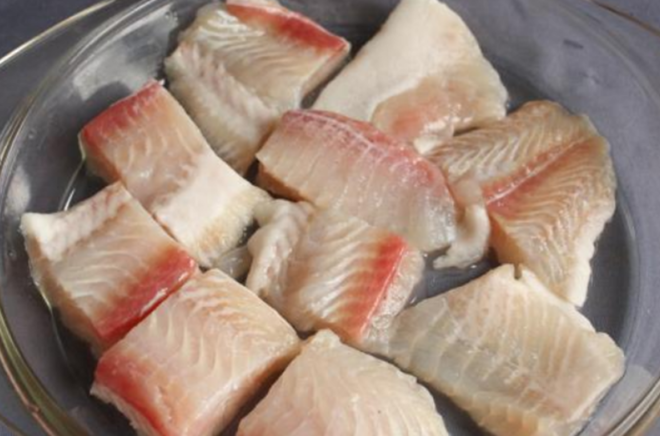
Is it possible to give pangasius to children
There is no doubt that there is a positive effect from this product for the child's body. It consists in a large amount of phosphorus and calcium, due to which the skeletal system is strengthened in children and the functioning of the nervous system improves.
However, do not forget about the origin of this product. Therefore, before giving pangasius fillets to a child, you should weigh the pros and cons. In addition, it is advisable to do this after consulting a pediatrician or doctor.
Also, a relative danger to children is represented by small bones, which abound in pangasius meat. Therefore, when feeding small children with it, you should carefully examine the pieces of meat and, if possible, get rid of small bones.
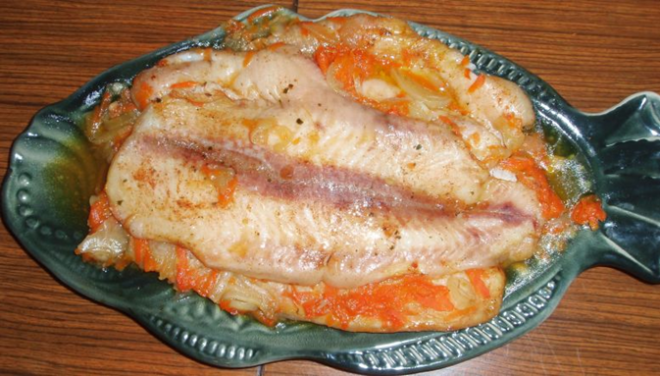
How to cook pangasius deliciously
The fish goes well with many other foods and can be prepared in a wide variety of ways. There are over a hundred recipes that include pangasius: from soups and main courses to pies and rolls.
Mostly fish is cooked with vegetables, seasoned with abundant herbs. It is allowed to be baked in batter or sour cream. Fillets can also be grilled and in a variety of wines.
Actually, there are practically no incongruous combinations of products that would include pangasius. This is what explains its great popularity.

Harm of pangasius and contraindications for use
The question whether pangasius is harmful or useful remains open. The beneficial properties of fish are very diverse, but this applies to specimens grown in more or less acceptable conditions.
Vietnam is a relatively poor country, which cannot but affect the organization of fish farming. The food that pangasius feeds on is not always of natural origin. Often these are chemicals designed to stimulate rapid growth and mass gain in fish in order to shorten rearing time. In addition, the cost (and therefore the quality) of these feeds can be very low.
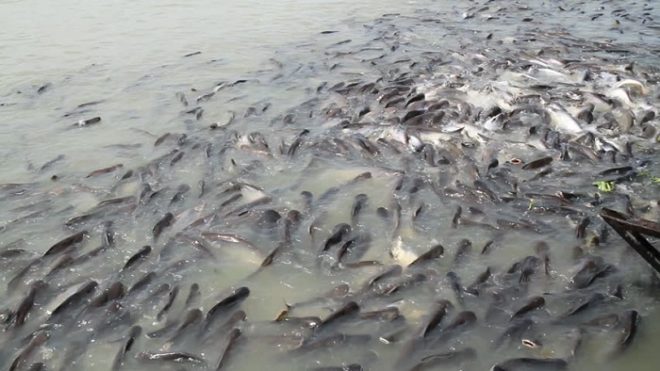
The environment in which the fish is grown also plays an important role. The Mekong River is considered one of the dirtiest in the Indochina Peninsula, so the whole "bouquet" from its pollution in the form of industrial effluents and heavy elements, one way or another, will affect the quality of fish meat.
Naturally, such growing conditions are not present everywhere, but it would be naive to believe that a poor country will thoroughly follow the letter of the law in observing food standards, especially those published in other states.
On the other hand, the responsible seller always conducts a veterinary examination of the fish before putting it up for sale, the results of which must be provided to the buyer upon request. Thus, you can avoid almost all the negative consequences of eating this fish.
But even "clean" fish, grown under normal conditions, can be harmful, since it has a number of contraindications. First of all, this applies to fish allergy and individual intolerance to this particular type of meat. In addition, pangasius is a rather "heavy" fish for the digestive tract and should not be consumed too much.
How to choose the right pangasius
Pangasius rarely appears on sale in the form of carcasses. This is due to the fact that it is usually cut at the place of cultivation, and then the fillet is shock-frozen and transported to the place of sale. This greatly simplifies the process of choosing meat.
The “grayer” the fillet, the worse the product. Even a hint of a grayish tint suggests that it is better not to buy fish: most likely, the conditions for growing and feeding the fish did not meet even the lowest standards.
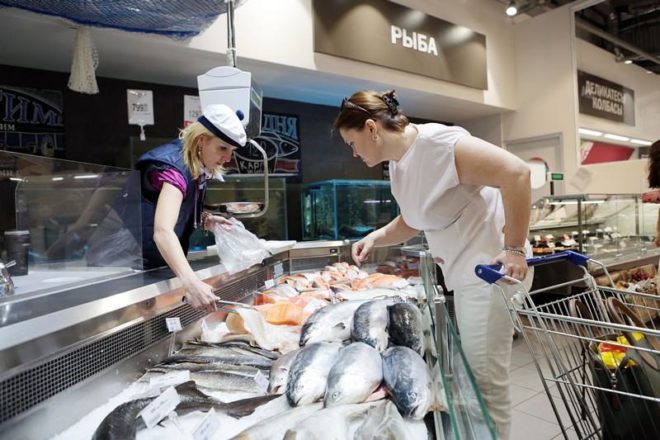
How to store pangasius
Fillets can be stored frozen for about a month. After thawing, it is necessary to cook it for several hours, because, like all river fish, it will quickly deteriorate.
Conclusion
The benefits and harms of pangasius depend on the conditions of fish farming. As such, pangasius meat has no contraindications, except, of course, allergic reactions. Pangasius meat has many beneficial properties and is recommended for consumption at any age. The main thing is to purchase fish from trusted sellers and it is highly desirable to familiarize yourself with the veterinary documents for it.

